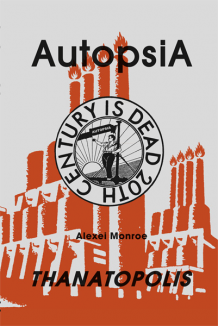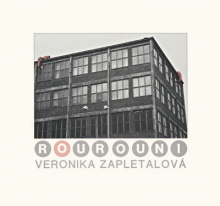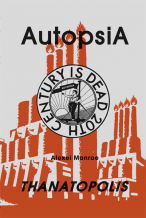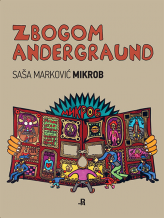| The Boyar’s life is a miracle | Alle Artikeln aus DIVUS LIVE (blog) | ||||||||||||
|
|||||||||||||
The Boyar’s life is a miracle20.09.2012ArtLeaks | en |
|||||||||||||
|
The handover of power after the 2012 Serbian elections meant a shift in the country’s geopolitical alignment as well as its system of government. The effect on the cultural economy is beginning to show the paths its future development might take. This case-study examines ethno-centric cultural real estate projects as symptoms of a possible regression to feudal relations.
The rise of the “ethno-city” in Serbia and Serbian-held parts of Bosnia between 2003- 2012 represents a new stage in the retroactive “improvement” of national history, especially of the ethnic-cleansed areas. The “ethno-city”, is a form of sprawling tourist resort in which visitors gain education – that is the acceptable interpretation of the national narrative. Unlike most ordinary “ethno-villages”, which just try to turn profit and survive, the larger, “ethno-cities” are typically built in areas where the population has been cleansed by war or economy. These “ethno-cities” are sanctified and protected by their “ethno” status, which also means they are in a way, state & church-run enterprises under private ownership. If the ethnified villages are the kitchy continuation of their own existence and the regular village tourism, the “cities” seem more like descendants of earlier machines for improving a sense of history, philosophy and spirituality – the baroque “folly”, and the theme park. The latter day Serbian follies have been known to grow into modest hamlets of wooden mountain houses, castles, cinemas, swimming pools, multiple restaurants of national cuisine, clubs, gyms, libraries, kindergarden, saunas, skiing resorts, hotels, and the obligatory Russian-esque wooden village church. The cities, just as the castles of yesteryear with their follies, are built to cater to all the needs of their owners and their guests. Sometimes, they include minor, yet stylish distractions as well – a national hero or a celebrity statue, a monastery, a vintage car or horse buggy, afilm or classical music festival, a business school, organic juice factory, and so on… The local park rangers are at hand to police the grounds, guarding the tranquility of the “estate.” The description above fits both Nemanja (Emir) Kusturica’s sprawling real-estate and cultural fiefdom, as well as the quaintly massive ethno-village “Stanišići” near Bijeljina. As Kusturica’s first such venture “Drvengrad” is branching out, growing into a fully developed resort, the old story of “a couple of houses with chickens running in the yard” is expediently being forgotten. As if it could have fooled anyone. The project started two years ago, when the director spotted a “beautifully lit” mountaintop across from his film-set. Soon, the designation of the area as a “state national park” was postponed, giving Kusturica time to build, while effecting a ban on construction for the local villagers, over whose pastures the complex now sprawls. That gave way to the next stage, a “minor” expansion in the form of a fully equipped resort. The economy of the expansion is what is of public interest here. Not only were public lands usurped and villagers’ lives and economy damaged, but the expansion has been necessary to justify investment in further regional ambitions: “Andrićgrad”, nearing completion next to Mehmed Pasha’s bridge in Serb-ruled and ethnically cleansed Višegrad, in Bosnia, and just festively announced, “Kraljevograd” next to the Maglič medieval fortress, a heritage site in the Ibar river valley, between Studenica and Žiča monasteries, inside Serbia proper. The crimes of the local Serbs and the genocide in Višegrad (and Bijeljina) were the subject of several trials in the International tribunal for war crimes, Milan Lukić’s trial being one of the most highly profiled. The “Andrićgrad” project represents a key final stage in successive waves of cultural normalization. As soon as the peace accords rewarded the aggression, Serb director Srdjan Dragojević began filming his fiction over the locations of the recent genocide. With the arrival of Kusturica’s project aiming for the cultural solidification of national gains, an indelible imprint on the political landscape of the region is being made: by literally re-reading the history narrated by architectural occupation. The method of altering reality through retroactive “improvements of medieval infrastructure”1 is carefully shaped so as to be seen as desirable and to be well-received by the Serbian public. There are no negative associations with the nostalgic world of medieval knights; and the lost Serbian kingdom is a bedrock not only of nationalist system of values, but is being branded as the base for a national consensus that has persistently promoted the value of land over life. The product of all this is, as always, both political and economic. Political, as segregation of desirable culture into gated, commercial theme parks, the historic and architectural mask over the missing middle and new age in Serbian culture, the “ethno-cities” serve as militant cultural bases for the projection of the re-constructed Serbian sovereign continuity spanning the period from feudalism to newer models of social organization. The attraction of medieval period is also grounded in the economic reasoning for the creation of new, openly rightist cultural paradigm, based on the cultural erasure of the consequences of war and genocide from the land itself. I tend to see this stage as a political and cultural necessity, without which the ethnic cleansing would make no sense at all. This is the stage that affirms the continuity of the Serbian nationalist project and traces the agenda for the war crimes right back to the original (recent) group who fought to “improve history” – Serbian security apparatus, politicians and academia of the 1987 vintage, seeking to escape impending democratization by dividing the Yugoslav state into feudal, personal fiefdoms. The feudal model of running things is actually, an efficient one in centralized environments where the ruler creates the economic model based usually on a single dominant industry that can be run efficiently in a centralized way, just as oil, gas and mining are used in post-democratic Russia. The disregard for the values of law, ecology, human rights and fiscal impunityare added to the levers of economic control by the ruler. This economic model spawns the new boyar, the director/tycoon whose loyalty is awarded large swaths of land, people and history to manage and exploit in name of the church and state. Unlike the capitalist who thrives on competition, or the intermediary stage of the “oligarch”, boyar’s economic standing is primarily the consequence of an entitlement based on professed and proven political loyalty. Serbia’s signs of return to the feudal rule are based on distributed sovereignty, riding on the coattails of increased dominance of oligarchs during the 12 years of democrats rule. This shift is obvious in the diplomatic, political and cultural moves announced by the SNS (The Serbian Progressive Party) during its first 50 days in office. Obtaining a credit line from Russia on favorable terms, as well as attempting to do the same with China, shows a fiscally bankrupt state opening to front their interests in the Balkans, and willing to accept dependency in favor of fiscal and political responsibility required by the EU. This loan, earmarked for budgetary spending is approved as the political stabilization of the new SNS-SPS (Socialist Party of Seribia) government is about to be finalized; though the announced arms purchases and pending gas bills will ensure Serbia’s long-term dependence on constant handouts. The economic and political price will be fully realized much later, at a stage when robust civil society will have to re-emerge. But for now, the intensity of diplomatic activity, distribution of positions, lands and funds to Putinist loyalists in Serbia is showing the willingness of the SNS to try not only to redistribute, but outsource at least some Serbian sovereignty. After all, in an empire this large, with an emperor so far away, a boyar ready to project constant readiness to serve will be awarded a long and stable rule. The second, economic aspect differentiating “ethno-cities” from the “ethno-villages” is the neo-feudal model of extendable “concession”, paid for mainly in public property as well as money, diverting it into private construction projects. This type of conversion is frequent in cases of corruption, as awarding contracts and construction projects is far more lucrative than running actual cultural programs, even nationalist ones. In such model, the profit is the state’s participation in the venture, which sole purpose is to get approved and paid. Any actual building (if and at all), serves to justify the follow-on investment, just as making the “ethno-city” seem like a profitably run business. This explains why remoteness of a location or actual profit generation are immaterial to the “success” of the venture. The ascending scale of publicly admitted costs places Drvengrad at a few million euro, mainly donated privately, (before hotel and ski resort phase), Andrićgrad is advancing through it’s teens, adding publicly admitted infusions from Republika Srpska’s budget amounting to 6.5 mil. marks to the original projection of 10-12 mil. marks2, plus the undervalued land (30000sqm for 50000 conv. marks). Kraljevgrad was just announced by the new SNS government, weighing in at either 103 or 50 mil/eur2 over 5 years, depending on the source. That excludes the value of land, as well as cost-overruns, additional infrastructure, (extended narrow-track railway, roads, parking lots, water, sewage, power, etc…), environmental impact, damage to the private and public property and economy. All that, before Kusturica decides to make another film, or present any of his lavish, 100.000 Euro “Andrić literary awards”. (for slavic literature, taking the name of the original Andrić prize). The conservative estimates are placing the cumulative cost of “raising Kusturica” at anywhere between 30 – 70 mil/eur during the first full SNS mandate in Serbia. His brand being so closely tied-in to the that of Serbian nationalism, it is less compatible with the usual brand-managed career of an internationally successful director. Kusturica has always shown remarkable loyalty to the state, and it’s budget, returning to graze regularly, rather than depending on the western competitive model of studio production4. However, with the re-evaluation of previous government’s contracts through the emerging nickel prospecting scandal, Kusturica was propelled to rightfully and pre-emptively defend the ecological purity of his geographic domain, between Mokra Gora and Višegrad; unveiling his true status over the lands straddling the pre-war border between Serbia and Bosnia. All of this opens the question of Kusturica’s real status and role in not only this, but nearly all recent Serbian governments. A friend of Nikita Mihalkov and with access to Putin himself, there is little room left for doubt over his place in the boyar hierarchy. In my opinion, Kusturica is, and has been for some time now the real minister of culture of a unified Serbian state. And yet, his role hasn’t been without heroic, willing sacrifice. A man capable of grand gestures, by acquiring and revitalizing part of Višegrad, he has symbolically accepted the role of managing the imposed and unwanted national guilt, relieving the bourgeois citizens of the Serbian feudal state of any need for responsibility or remembrance. It all belongs to him now – past, present and future. Text by Nikola Radić Lucati
——————————
1The earlier, greener model of the Serbian “katun” mountain dwellings is abandoned in Andrićgrad for the conscious mimicry of the new, into faux Ottoman and Austrian city square. His cladding of buildings in scavenged stone has been well documented, and the civil unrest it sparked in Trebinje and elsewhere serves as the reminder not to take the supporting public lightly.
2http://www.slobodnaevropa.org/content/vlada-rs-pomaze-andricgrad-preko-dzepova-gradjana/24632822.html 3 http://www.kraljevo.org/Vesti-Pregled_lat 4To be fair, various scales of fiscal and political impunity are the only economic model nearly all our film directors have ever worked in successfully, most of their movies being paid for by the people. They are evenly distributed across the vestiges of the party system: (Dragojević – SPS, Paskaljević – URS, G17+, Kusturica – curently above partisan political level).
20.09.2012
Empfohlene Artikel
|
|||||||||||||
|
04.02.2020 10:17
Letošní 50. ročník Art Basel přilákal celkem 93 000 návštěvníků a sběratelů z 80 zemí světa. 290 prémiových galerií představilo umělecká díla od počátku 20. století až po současnost. Hlavní sektor přehlídky, tradičně v prvním patře výstavního prostoru, představil 232 předních galerií z celého světa nabízející umění nejvyšší kvality. Veletrh ukázal vzestupný trend prodeje prostřednictvím galerií jak soukromým sbírkám, tak i institucím. Kromě hlavního veletrhu stály za návštěvu i ty přidružené: Volta, Liste a Photo Basel, k tomu doprovodné programy a výstavy v místních institucích, které kvalitou daleko přesahují hranice města tj. Kunsthalle Basel, Kunstmuseum, Tinguely muzeum nebo Fondation Beyeler.
|































 New book by I.M.Jirous in English at our online bookshop.
New book by I.M.Jirous in English at our online bookshop.
Kommentar
Der Artikel ist bisher nicht kommentiert wordenNeuen Kommentar einfügen